#Maurice Spiegel
Text
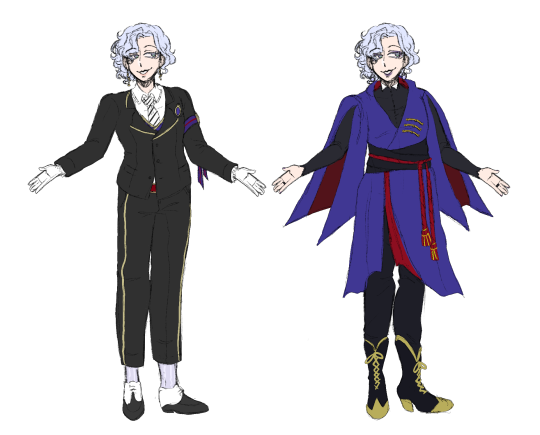
My boy, one of my first TWST ocs, Maurice also gets a remake! Finally out of his cage.

Name: Maurice Spiegel
Nickname: Barreleye (Floyd), Monsieur fier (Rook)
Age: 18
Birthday: February 10
Height: 184cm
Species: Human
Family: Parents
Homeland: Land of Pyroxene

Twisted from: Evil Queen's mirror

Class: 3-C
Dorm: Pomefiore
Occupation: Student
Club: Board games club
Best Subject: Art
Dominant hand: Ambidextrous
Favorite Food: Ice cream
Likes: Annoying Vil, figure drawing, fashion, dotting on his underclassmen
Dislikes: People without manners, loud noises
Talents: Drawing, painting
Hobby: Watching Runways

Personality: Honest to a fault, Maurice wants his peers to better themselves. He believes in saying what's true no matter what, maybe expect times where someone can't handle the truth just yet, he's genuine despite his criticisms. Dotes on people frequently especially his underclassmen, has a mischievous streak that usually makes his appearance around friends and his dorm leader. He doesn't know when to keep his mouth close which gets him on people's bad side or worse if it wasn't for his friend Wyn.
Unique Magic: Mirror Mirror, on the wall
With his Unique Magic Maurice can temporarily copy anyone's appearance, personality and a small amount of their magic. He just needs to talk with them at least once to use it.

Trivia
- Maurice's parents are fashion designers they have a shared label under the name "Pristine", Maurice is following in their footsteps. Enjoys using his schoolmates as models they are all so unique!
- Despite being from Pyroxene, went to middle school in Kingdom of Roses which led to him becoming close friends with Wyn. Their families becoming incredibly close as well.
- Enjoys using other students as his models, likes making clothes for people just to try something new, out of his comfort zone!
- Would've love to be in Fangulous but very happy in Pomefiore
- Enjoys reading and analyzing people, looks out for people potentially trying to manipulate him. He'll know. He won't appreciate it.
- Has different earrings for different outfits! loves to accessorize

Banners by @/arcdiris
#Here he is!!!#I think out of all my og twst ocs he needed a remake the most 💀💀#I might do Livius and Elphabeth if I feel like it i think their art is still passable#Till then.. New goobers shall arrive#Twisted wonderland#Twisted wonderland oc#Twst#Twst oc#Maurice Spiegel#My art#Oc Bios#Pomefiore
23 notes
·
View notes
Text
the cycle of inspiration is literally so beautiful like. okay. from what i know edgar allen poe created the detective c auguste dupin for a story that is seemingly the first modern detective story. which lead to the existence of the fictional detectives hercule poirot by agatha christie but also sherlock holmes by arthur conan doyle. the latter of whom in turn inspired conan doyle's brother in law to create aj raffles, the gentleman thief. which inspired maurice leblanc to create arsene lupin, and arsene lupin inspired monkey punch to create lupin iii - which lead to the creation of lupin viii which apparently lead to the inspiration of inspector gadget??? - and also inspired cowboy bebop, and the character of spike spiegel inspired jet from avatar the last airbender - and there were other inspirations involved in all these things too, but it's amazing how one creation can lead to a chain reaction that inspires the creation of so much more it's truly beautiful and breathtaking the way art is inspired by art. you can see the ways these things are all similar, yet also unique and different and have their places in their story. but you can see the traits that are carried on through all of them. isnt it beautiful how legacies intertwine? whatever life is incredible
3 notes
·
View notes
Text

Recherche
Wieder zurück aus London. Im Anschluss an eine kleine Seligenstadtrecherche treffe ich Maurice Weiss von der Agentur Ostkreuz, mehr oder weniger zufällig, er ist ja auch eine Art Hoffotograf des WIKO in Berlin und es gibt eine Art Aussenstelle der feinakademischen Berliner Gemeinde in Seligenstadt, da treffen wir uns.
Er nennt seine Fotografie, die er so richtig, als Profi betreibt, journalistische Fotografie und Autorenfotografie (meine wäre dann, denke ich mir, essayistisch und textkooperierend). Die journalistische Autorenfotografie würde aus dem angestammten Foren in der Presse verdrängt und durch die Fotos von Werbenden und von sog. Contentcreatern ersetzt. Die Spiegel etwa, Hauptquartier einer von fatalem ökonomischem Geiz und Klischees getriebenen Presse, die gleichzeitig nicht und nur noch wisse, was sie wolle, bestelle Bilder mit jeweils festen Vorstellungen: Putins kleine Tische, Trump oder Boris Johnson in bekloppten Situationen (immer wieder verwehte Frisuren und linkische Gebärden), Scholz so, wie alle sich ihn vorstellen (also hinreichend nichtssagend), grüne Politiker vor Grün, rote vor Rot etc. Kein Wunder und doch bemerkenswert, wenn ein Teil des Publikums sich für dumm verkauft glaubt, wenn die Redakteure dem Wahn dessen, was die Leute angeblich sehen wollen, aufsitzen. Doppelte Kontingenz kann auch verschalen.
Im Gespräch kämpft Weiss gegen das Innere früher-war-mehr-Lametta deutlich und zu recht an. Wenn die Leute mir nicht mehr vertrauen, so ungefähr sagt er das, dann fällt nicht nur meine Geschäftsgrundlage weg, sondern auch auch ein Teil dessen, was zur (repräsentativen) Demokratie gehört. Das kann gut sein.
Das Problem existiert. Probleme verschwinden auch nicht wieder, wenn sie zweiseitig sind und man darauf hinweist, ganz im Gegenteil. Mangelndes Vertrauen kann nicht einfach als Folge schlechter Pressearbeit verstanden werden, die Leute müssen schon mitdenken und dürfen keine Bildanalphabeten sein. Von Weiss kann man sehr viel lernen, er schreibt nicht gerne, außer mit Licht und Schatten.
5 notes
·
View notes
Text
RTL prüft rund 100 Beiträge von ehemaligem Reporter
Tichy:»Der Skandal um ein gefälschtes Zitat der früheren AfD-Politikerin Frauke Petry hat für RTL weitere Konsequenzen. Der Sender will rund 100 Beiträge des freien Reporters Maurice Gajda auf Verstöße gegen journalistische „Guidelines“ kontrollieren. Die Prüfungen dazu werden „einige Zeit in Anspruch nehmen“, sagte eine Sprecherin, wie der „Spiegel“ berichtet. Außerdem möchte RTL seine Mitarbeiter in
Der Beitrag RTL prüft rund 100 Beiträge von ehemaligem Reporter erschien zuerst auf Tichys Einblick. http://dlvr.it/SvCXjW «
0 notes
Text
Pont d'Arc - Gorges d'Ardeche - Mont Gerbier de Jonc - Saint-Maurice-de-Lignon
Vrijdag 5 mei
Na een heerlijke rustige nacht ontbijt ik op mijn gemakje buiten. Voor ik weer verder rij wil ik nogmaals een kijkje nemen bij de Pont d'Arc in het ochtendlicht.
Het is prachtig. De zon komt net door en mede hierdoor ziet het er toch weer anders uit dan gisteravond. De spiegeling in het water maakt het helemaal af 😍.

Ik heb mijn spullen al ingepakt en rij vandaag een behoorlijk aantal kilometers. Ik wil eerst de Gorges d'Ardeche verkennen.

Vanaf mijn camperplaats start ik met de 34 kilometer lange route door de kloof. Uiteraard dit keer met de auto 😉. Er zijn elf uitkijkpunten waar ik kan stoppen. Bij de eerste word ik al op een mooi uitzicht getrakteerd!

Na de eerste twee stops, gaat mijn telefoon raar doen. Ik heb opeens geen beeld meer en kan hierdoor op de andere uitzichtpunten geen foto's meer maken met mijn telefoon. Gelukkig heb ik nog wel mijn andere camera bij mij waardoor ik niets hoef te missen 😉.
Waar ik ook achter kom is dat ik nu natuurlijk geen navigatie meer heb. Tenminste, ik heb gelukkig nog navigatie in mijn auto, maar die pakt niet alle adressen of plaatsnamen die ik invoer 🙈. Gelukkig heb ik ook nog een ouderwetse kaartenboek bij me. Helaas is deze weer niet heel gedetailleerd, maar gelukkig kan ik aan de hand van de wat grotere plaatsen die wel op de kaart staan, mijn route redelijk bepalen. Alleen autorijden én kaartlezen én de juiste borden volgen lukt me niet allemaal tegelijkertijd. Ik stop regelmatig om te checken of ik goed zit. Een paar keer moet ik keren omdat ik mijn navigatie in de auto niet altijd vertrouw (hij is 12 jaar oud en nooit geupdate), maar ook omdat ik het liefst tolwegen wil vermijden.
Uiteindelijk arriveer ik in het plaatsje 'Vogue'. Toevallig had ik hier gisteren nog over gelezen en leek mij dat een mooie eerste koffiestop. Uiteindelijk werd het een ijsje-stop 😜. Ik wandel door het stadje, naar het kasteel en de kapel bovenop de berg. Ik heb een mooi zicht!
In Vogue spreek ik een Nederlandse man aan die mij helpt om te navigeren naar de eerste de beste Mc Donalds. Niet om te eten, wel koffie, maar omdat ze daar wifi hebben. Ik heb namelijk nog een iPad mee! Via de wifi kan ik dan proberen wat adressen op te schrijven waar ik de komende 2 dagen naartoe wil en waar ik kan slapen.
Het internet werkt alleen superslecht...😞. Gelukkig ook hier weer Nederlanders die ik kan aanspreken en mij graag willen helpen. Ik bel eerst even naar Nederland om te zeggen dat ik de komende dagen waarschijnlijk niet bereikbaar zal zijn. Vervolgens kan ik via de mobiele hotspot van hen alsnog op internet en vind ik mijn adressen.
De vrouw heeft nog een tip. Naast dat ik mijn telefoon al in een bakje rijst had gelegd, zegt ze 'waarom doe je hem niet even onder de blower in de toiletten?'. Wat een top idee! Het helpt vrij snel! Na tien minuten krijg ik weer wat beeld. Yesss! Nu kan ik ook weer navigeren 💪🏻.

Ik stap in mijn campertje en rij vervolgens richting Mont Gerbier de Jonc. De hoogste bergtop van de Ardeche. Ik ben hier enkele jaren geleden al geweest, maar weet dat ik vanaf de top een mooi uitzicht heb.

Onderweg wordt het wel steeds bewolkter...en wanneer ik bij de berg arriveer besef ik me dat het geen lange wandeling zal worden.

Nu is de top in tien minuten al bereikbaar overigens.

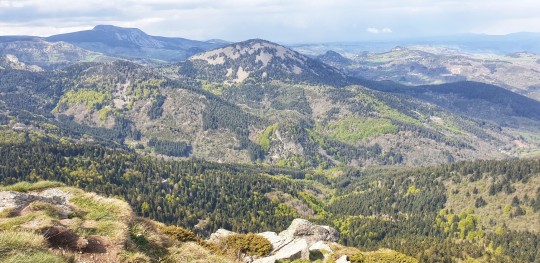
Het is weer erg gaaf om alle pieken te zien, maar de lucht wordt dreigender en dreigender.

Na tien minuten ga ik toch aan mijn afdaling beginnen. De afdaling is wat uitdagender dan de beklimming...een van de touwen is duidelijk aan vervanging toe 😮.
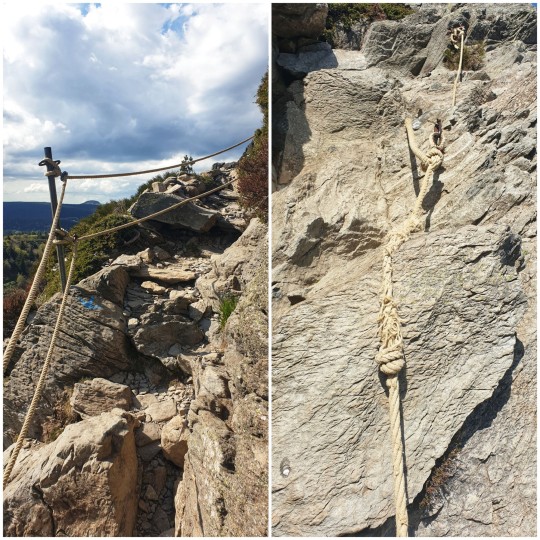
Ik zit net in mijn campertje en het begint te spetteren...wat een geluk weer! Ik rij nog maar net weg of het begint echt keihard te regenen. Zo hard dat ik bijna mijn campertje aan de kant moet zetten. Helaas geen parkeerplek aanwezig, dus maar voorzichtig verder rijden. Niet veel later is de regen al weer gestopt, of ben ik door de bui weggereden.
Onderweg stop ik nog een keer voor boodschappen en zoek ik een camperplaats in de buurt op. Ik heb wel genoeg gezien vandaag. In Saint-Maurice-de-Lignon vind ik een mooie plek op een rustige parkeerplaats naast een veld met schapen en heel veel krekels 😉.
0 notes
Photo

Zal een virtuele blog die elke dag groeit en in opbouw is, meer openstaan voor verandering?
Kan je tijdens het deconstrueren ook aan construeren doen? (Patricia de Martelaere)
Kan Poezie de weg zijn die taal ook als beeld of vrijere vorm doet bestaan? (Neruda)
Kan een aanbouw en drager zoals een opbouwende verdieping zijn? Horizontaal bouwen (Isa Genzken)
Is de spiegel in de kunstwereld, en dus het spiegelen van wat je ziet of een omgeving, geen luie en meegaande houding ( is enkel een nieuw/ander perspectief wel genoeg? (Kafka, Ann Veronica Janssens)
Kan je door een reconstructie of deconstructie ook aan restauratie doen? Dingen die er al waren met voorgaande bouwstenen toch opnieuw en aangepast laten bestaan? (Elisabeth Price)
Bewees Bolonga in de Middeleeuwen dat de toren letterlijk en figuurlijk voor macht en geld staat? (Dante en Caspar David Friedrich, ziehier kijkuit 2 oude mannen)
Kan de lijn ook voor vervorming en verandering openstaan zonder daarbij niet ergens met reeds bestaande structuren mee te gaan, nooit anders te zijn? Kan de lijn ook progressief en vernieuwend zijn? Kan de lijn ook vernieuwend zijn? Kan de lijn niet rechtlijnige dingen maken? Kan je binnen en met de lijn toch niet rechtlijnig worden? (Maurice Seuphor)
0 notes
Photo





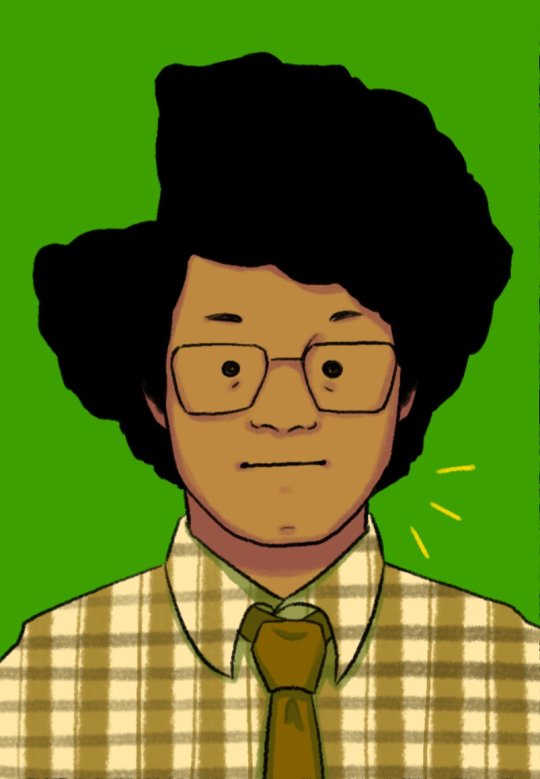

six character fanart challenge! something i’ve been working on for a while.
obviously i drew reigen the best, right? 💅✨✨
#just kidding. i like how i drew hawks the most#followed by miku and spike!!#and PHEW been a while since i drew anything for the it crowd#might do it again eventually!#i have a few more things to post#did you guys know that posting photos from your phone on the mobile version of tumblr sucks#i only found that out recently#its so annoying!!! you can't click on photos to zoom in if they were posted from your phone#that sucks so much bc i posted most of the stuff on this blog from my phone lol#anyways drawing on my lil tablet is so fun#its not like a wacom or intuos its just like. this actual tablet. like a samsung tablet with a pen#and i'm learning more and more about digital art... this was really really fun#hope everyone is doing ok! i've been busy with family care stuff#sixfanarts#six characters#digital art#cowboy bebop#spike spiegel#maurice moss#the it crowd#this is an anti graham linehan account by the way#catra#she ra#hatsune miku#vocaloid#world is mine#reigen arakata#mob psycho 100#hawks#my hero academia
48 notes
·
View notes
Text
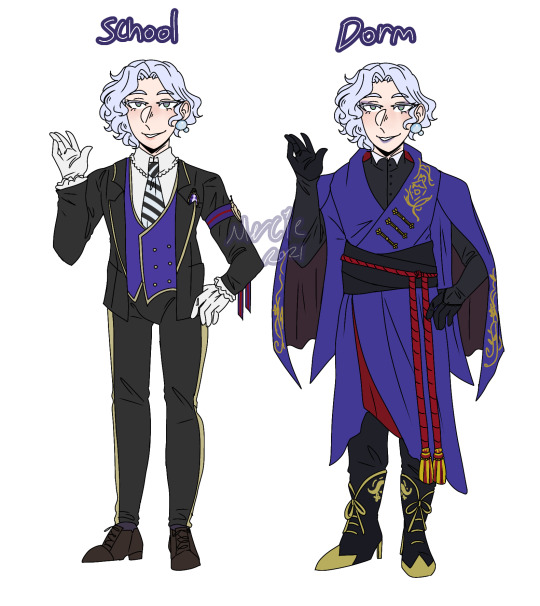
Maurice Spiegel is a third year student in Pomefiore, he's a charming man who loves to dote on his schoolmates but he tends to criticize them harshly as well.
Name: Maurice Spiegel
Nickname: Barreleye (Floyd), Monsieur fier (Rook)
Dorm: Pomefiore
Class: 3-C
Birthday: February 10
Age: 18
Height: 183cm
Dominant hand: Both
Homeland: Land of Pyroxene
Club: Board Game club
Best subjects: Arts
Hobby: Annoying Vil
Dislikes: Loud music
Favorite food: Ice cream
Least favorite food: Anything Spicy
Talents: Painting
#Pomefiore uniforms are HARD#He's the first twst oc i did and he's based on the magic mirror lol#Enjoy this hoe#I only have two characters left and then im never drawing full bodies again#Twisted wonderland#Twst#Twisted wonderland oc#Twst oc#My art
37 notes
·
View notes
Text
Neues Spielzeug
Ich war einkaufen und verbrachte den gesamten Vormittag in der Stadt. Als ich wieder zu Hause war, erschrak ich, als Maurice mich bereits erwartete. Ich war so überrascht, dass ich auf mein Handy schaute, ob ich etwas übersehen hatte, doch er kam auf mich zu, nahm mich in den Arm und küsste mich leidenschaftlich.
Er sagte, dass er mich überraschen wollte und alles gut sei. Ich schaute ihn an und meinte, dass ich mich sofort umziehen würde, da ich ja eine Jeans, Shirt und flache Schuhe anhatte. Doch er hielt mich auf. Ausziehen würde reichen.
Und so entkleidete ich mich mitten im Flur, mein Halsband lag auf der Kommode, was ich als einziges anlegte. Maurice blieb vor mir stehen und ein zucken mit den Augen machte mir sofort klar, was ich zu tun hatte. Ich ging auf die Knie und küsste seine Schuhspitzen.
Ich stellte mich wieder hin, senkte den Blick und nahm die Hände auf den Rücken.
Er reichte mir ein Haarband und ich hatte meine langen Haare zu einem Zopf zu flechten, dann verband er mir die Augen und führte mich durch die Wohnung. Wir kamen im Schlafzimmer an und er führte mich in die Mitte das Raumes, bis in an etwas stieß. Er drückte meinen Oberkörper vorn über und ich beugte mich über das Gestell. Ich erriet sofort um was es sich handelte, es war ein Pranger. Kopf und Hände wurden in die Vertiefungen gelegt, dann kam das Gegenstück darüber. Er spreizte meine Beine und fixierte auch diese.
In dieser Position waren meine Öffnungen gut für ihn zugänglich. Er kam herum und legte mir noch einen Ballknebel an. Dann war er wieder hinter mir und fing an mich zu bespielen. Streichelte mich, drang mit seinen Fingern in mich. Ich wurde immer feuchter und stöhnte. Es kamen Analplugs und Vibratoren dazu und immer wieder sagte er mir, dass ich nicht kommen darf. Es wurde immer schwerer und ich zuckte, konnte mich aber kaum ein Zentimeter bewegen.
Als er mich dann mit einem Doppeldildo fickte schaffte ich es nicht mehr und kam in einem wahnsinns Orgasmus. Ich war so feucht, dass mein Saft mir die Beine herunterlief.
Er fragte, was das bitte gewesen sei und ich nuschelte durch den Knebel eine Entschuldigung. Mir war klar, dass es ihm nicht reichen würde und dass er es darauf angelegt hatte und schon bekam ich den ersten Hieb mit einem Rohrstock. Ich zuckte und schrie kurz auf, dann folgten die nächsten. Er zeichnete mit den Striemen ein Muster auf Arsch und Oberschenkel und mir kamen die ersten Tränen. Er meinte, dass ich ein geiles, lüsternes Luder sei und dass ich nun die Konsequenzen zu tragen habe.
Wieder schob er mir einen Dildo in meine Spalte und fickte mich damit. Erst nach einigen Stoßen realisierte ich, dass nicht er es war, sondern eine Fickmaschine. Ich wurde immer schneller und heftiger gestoßen und der nächste Orgasmus bahnte sich an. Ich konnte mir nicht mal auf die Lippe beißen um es zu verhindern.
Dann kam ein Schlag mit der Bullenpeitsche und ich schrie auf, wieder wartete er bis die Fickmaschine ihre Arbeit tat und wieder kurz vor meinem Orgasmus gab es den nächsten Schlag. Es brannte wie Feuer. Erregung und Schmerz brachten mich in eine surreale Welt. Fünfzehn hiebe bekam ich, dabei kam ich drei weitere Male zum Orgasmus.
Dann war er hinter mir, während die Fickmaschine weiter lief, drang er in meinen Arsch ein und fickte mich ganz langsam. Ich kam noch weitere drei Mal, eh er mich richtig hart fickte und tief in mir abspritzte.
Ich sackte zusammen und er befreite mich, fing mich auf und trug mich ins Bett. Dort legte er mich aufs Bett und fing an meine Wunden zu versorgen, da meine Haut an der ein oder anderen Stelle aufgeplatzt war. Liebevoll streichelte und küsste er meinen ganzen Körper, nahm mich fest in den Arm und ich spürte seine Liebe zu mir.
Völlig erschöpft schlief ich ein. In der Nacht wurde ich war und ich hatte ein ganz leichtes Samtnachthemd an. Ich hatte nicht mitbekommen, dass er es mir angezogen hatte.
Ich ging ins Bad und merkte, wie mir alles weh tat. Am Waschbecken hatte er mir Schmerzmittel bereitgelegt, die ich auch zu mir nah. Ich schaute in den Spiegel und betrachtete eine Rückseite. Kurz erschrak ich über den Anblick, dann machte es mich aber schon wieder feucht, dass ich das für ihn ertragen hatte.
Ich ging zu ihm zurück ins Bett, kroch unter die Decke und wanderte mit meinem Kopf zu seinem Schritt. Vorsichtig fing ich an ihn zu lecken und er zuckte sofort und wurde hart. Ich nahm ihn tief in meinem Mund auf und fing an ihn zu blasen. Er wurde immer unruhiger und ich immer schneller, er kam und spritzte in meinem Mund, was ich alles aufnahm und schluckte. Ich leckte ihn noch sauber, dann kuschelte ich mich an ihn und sagte ihm, wie sehr ich ihn liebe und bedankte mich bei ihm, dass er mich mit so strenger Hand führt. Er lächelte nur und eh er etwas sagen konnte war ich wieder eingeschlafen.
Ich schlief lange und erschrak, dass ich verschlafen hatte. Ich kam aus dem Bett und ging in die Küche, doch Maurice war bereits zur Arbeit.
Ich fand einen Zettel:
Meine wundervolle Lisa,
ich liebe dich von ganzen Herzen und bin ganz stolz auf dich. Ich weiß, dass ich gestern sehr weit gegangen bin. Ich werde mich aber nicht entschuldigen, du weißt, dass das nicht in meiner Natur liegt. Aber ich gestatte dir, dass du heute kein Essen vorbereiten musst und dir Kleidung aussuchen darfst, die du angenehm tragen kannst. Auch darfst du heute auf hochhackige Schuhe verzichten, wenn ich Heim komme.
In Liebe Maurice
Mir ging das Herz auf und ich war so glücklich. Allerding erwartete ich ihn in enger Unterbrustkorsage, Strapse und High Heels, auch wenn es auf den Wunden recht weh tat, wollte ich ihn so Empfangen.
Er kam zur Tür rein und eh er etwas sagen konnte küsste ich ihn und sagte, dass ich ihm gehöre und genau so für ihn bereit sein möchte. Als er mich dann küsste wurden auch seine Augen feucht. Und den gesamten Abend wurde ich von ihm immer wieder gestreichelt, liebkost, geküsst, massiert und einfach im Arm gehalten. Es war so schön.
20 notes
·
View notes
Text

The Little Arsonist: Homage to René Daumal, 1965
Maurice Henry; Karl Gerstner; Daniel Spoeri; Galerie der Spiegel
Mixed media multiple consisting of twigs, plant fibers, metal, glass, wood and paper matches, gasoline, offset lithography on paper, and Plexiglas; housed in a cloth covered clamshell box.
Recognized for his discerning sense of humor, Surrealist artist, poet, and cartoonist Maurice Henry satirizes the boxed activity kits marketed to young boys and girls in this absurdist-inspired version tailored for the juvenile pyromaniac. Outfitted with matches, lighter, kindling materials, gasoline, and printed instructions, Henry's instructional game is every parent's nightmare.
As the title notes, the work honors French Surrealist novelist and poet Rene Daumal (1908-1944), widely respected for his writings on spiritualism and perception.
Minneapolis Institute of Art
11 notes
·
View notes
Link
Four years ago, Tom Furstenberg proudly carried into his synagogue its first Torah scroll since the Holocaust, when local Nazis destroyed the building’s interior.
The scroll’s introduction in 2014 was an important moment for the Beth Shoshana Masorti community that Furstenberg helped establish in 2010 in this city of nearly 100,000 residents located 60 miles east of the capital Amsterdam.
After all, it was proof that Jewish life had finally returned to a place where it had been uprooted and destroyed.
...Furstenberg had been overly optimistic.
On Monday [July 30, 2018], he and a dozen other members of their congregation of 35 had to take away the scroll and all the other ritual possessions and load them into a white van.
The building housing the Great Synagogue of Deventer was sold in January by the church that had owned it for decades. The developers, a Dutch-Turkish restaurant owner and his associate, then evicted the congregants amid a legal fight over the owners’ plan to turn the place into an eatery.
...But for many other Dutch Jews, the demise of the Great Synagogue of Deventer signals a broader demographic shift: Jewish life and heritage are becoming increasingly difficult to maintain outside Amsterdam, where most Dutch Jews live, because of secularization and the echoing losses of the Holocaust.
...On Monday, the congregation gathered one last time for a snack in the building they had just emptied of its possessions. Sipping black coffee and eating prune cake, they sang in passionate Hebrew “Am Yisrael Chai” and “Kol Ha’Olam Kulo” — “The People of Israel Live” and “The World is a Narrow Bridge.” Some of the congregants cried; others tried to console them.‘
...Maurice Swirc, the former editor in chief of NIW [Jewish weekly in Amsterdam], called the synagogue’s sale “a scandal” and found it “very painful.” Dutch authorities, he said, “were partially responsible for the fact that Deventer does not have enough Jews to maintain she synagogue. The least they could do is help preserve it.”
The affair prompted intense interest internationally. JTA’s video report of the community leaving the shul has been viewed more than 200,000 times on Facebook.
Ronny Naftaniel, a founder of The Hague Jewish Heritage group, said the synagogue’s sale is unusual “for a city such as Deventer, where authorities have a high awareness for heritage.” Deventer, where wealthy Jewish cattle dealers left an indelible mark and where a part of Naftaniel’s family lived before the Holocaust, “could have set aside this space,” he said.
Until recently, Furstenberg’s community was able to hold on to its synagogue thanks to the Christian Reformed Churches group. It bought the building in 1951 from the severely depleted Jewish community of Deventer and turned the structure into a church, complete with a massive pipe organ that the group installed.
In 2010, Furstenberg and other Jews from the area began convening at a nearby Jewish club and asked the church’s permission to re-establish a synagogue in the hall, which they began renting from the church at a subsidized rate. But the church had to sell the building this year. The highest bidder was Ayhan Sahin, the Dutch-Turkish developer, and his associate, Carlus Lenferink.
This summer, the entrepreneurs announced their plan to turn the synagogue into a restaurant. Furstenberg objected and the city declined to approve the plan.
Amid negotiations with the Jewish community, Sahin was quoted as saying: “If need be, I’ll turn it into a mosque,” according to De Stentor regional daily. He later said he would allow the Jewish community to stay, “but only if they pay full rent” – an unlikely prospect for the small congregation, which has no sources of income and could barely afford maintenance fees when it rented the shul at a subsidized price from the church.
...Losing the synagogue is “a failure and a major step back for the city,” Furstenberg said, his voice echoing in the tall and now empty space where his congregation would gather once every three weeks and on Jewish holidays. “Once again, the city is looking on as its synagogue is being destroyed.”
Furstenberg’s j’accuse, spoken in Dutch in the presence of local reporters, was a reference to the unusual and painful wartime history of the building. Unlike most Dutch synagogues, the one in Deventer was not confiscated in the orderly and methodical Nazi manner. Instead it was ransacked by a rabble belonging to the Dutch Nazi party, NSB, on July 25, 1941.
Under the gaze of local police officers, they smashed the furniture, hacked open the Torah ark, tore up the scroll, pulled down the chandeliers and dislodged the bimah of the building, which was built in 1892.
But that violence paled in comparison to the deportations of the congregants the next summer. Of the 590 people registered as Jews in Deventer in 1942, the Nazis murdered 401. It was a typical statistic in a country where the Nazis and local collaborators were responsible for killing at least 75 percent of Jews – the highest death rate in Nazi-occupied Western Europe.
Dutch Jewry, which numbered 140,000 before the Holocaust, never came close to replenishing its numbers. Today, Holland has about 45,000 Jews, according to the European Jewish Congress.
The Deventer synagogue played a role in the survival of at least two Jews.
Simon van Spiegel, his brother, Bubi, and Meier de Leeuw hid in the building’s attic for a while. Bubi was caught by the Germans after they received an anonymous tip. His brother and de Leeuw escaped. Simon’s daughter, Liesje Tesler-Van Spiegel, who lives in Israel, visited her father’s hiding place for the first time last month.
“I remember all of them,” Roelof de Vries, 86, a carpenter whose family worked as caretakers at the synagogue before the Holocaust.
“Even if this place becomes a restaurant, I’ll never forget my friend Bubi, whom they gassed along with so many others,” he said, weeping.
Referring to the genocide, Furstenberg said “This is the reason there are not enough Jews to afford this place.”
In the cool interior of the Great Synagogue – a tall building in the neo-Moorish style – he added: “This is not just a story about a dwindling faith community, like all those churches that get turned into a discotheques. This is an aftereffect of the Holocaust.”
Read Cnaan Liphshiz’s full piece at the Jewish Telegraphic Agency.
#holocaust#netherlands#deventer#nazism#antisemitism#genocide#'they can use it if they pay full rent'#well maybe if THEY hadn't been SOLD OUT to the nazis the synagogue would have never been up for sale in the first place
325 notes
·
View notes
Text



AU color palettes! (color palettes from here)
I'd like to make more au art so mayhaps expect more (no promises)
Pleiade belongs to @the27th
#Yes first one is a csm au#Max as a devil hunger and Sam as a fiend#Twisted wonderland oc#Twisted wonderland#Twst oc#Other characters#Pleiade Campbell#Maxwell Murray#Samuel#Caesar Verenalia#Wyn Hare#maurice spiegel#(he's there!)#CSM au#Magical girl au#Spy au#My art
25 notes
·
View notes
Text
Roadtrip von Freiburg nach Lissabon: Ist das Heimat?
Eigentlich wollte SPIEGEL-Reporter Alexander Smoltczyk gemeinsam mit Fotograf Maurice Weiss nur sein Auto nach Portugal überführen, eine Fahrt über 2000 Kilometer, gesäumt von Menschen aus fünf Ländern. Eigentlich.
https://ift.tt/2Lz3Mw5
3 notes
·
View notes
Photo
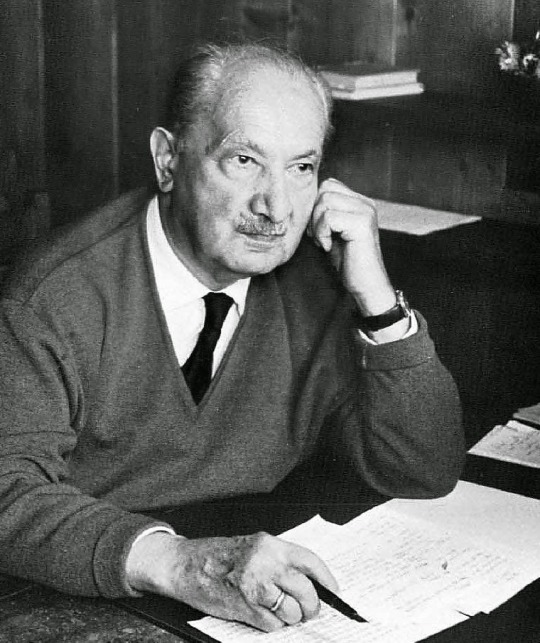
51 – IDEAS – HISTORIA DE LA FILOSOFIA – MARTÍN HEIDEGGER.
Martin Heidegger, nació en Baden-Wurtemberg, Alemania; el 26 de septiembre de 1889 y falleció en Friburgo de Brisgovia, Baden-Wurtemberg, Alemania; el 26 de mayo de 1976.
Fue un filósofo alemán. Es considerado el pensador y el filósofo más importante del siglo XX.
Aunque su trabajo influyó sobre todo en la Fenomenología y en la filosofía europea contemporánea, ha tenido igualmente influencia más allá de esta, en campos como la Arquitectura, la Crítica literaria, la Teología y las ciencias cognitivas.
En sus comienzos fue discípulo de Edmund Husserl, estuvo inmerso en el proyecto fenomenológico de su maestro y su interés se centró rápidamente en la pregunta por el sentido de ser.
Esta pregunta guiará gran parte de su pensamiento y es con ocasión de su intento de darle una "respuesta" con la obra Ser y tiempo, publicada en 1927, cuando va adquirir una gran notoriedad internacional, incluso más allá de los campos específicamente filosóficos.
En los años 30 tiene lugar aquello que se ha denominado el Giro (en alemán, Die Kehre) de su filosofía, con sus obras Carta sobre el humanismo e Introducción a la metafísica.
Trató así de preparar un nuevo camino para su pensamiento que se mantuviera alejado de la metafísica.
Según Hans-Georg Gadamer, este término ha acabado aunando todas las proposiciones contra las que Heidegger desarrolló su filosofía.
La influencia de Heidegger en la filosofía francesa ha sido particularmente notable. Esto se deja ver sobre todo en filósofos como Jean-Paul Sartre, Jean Beaufret, Emmanuel Lévinas, Jacques Derrida, Maurice Merleau-Ponty o Michel Foucault.
Asimismo, Heidegger es uno de los filósofos cuya personalidad y obra han generado más controversia por su actitud durante el periodo 1933-1934, mientras fue rector de la Universidad de Friburgo tras la llegada de Adolf Hitler al poder entre 1933 y 1945, ya que, además de ser uno de los principales intelectuales del movimiento revolucionario conservador, fue miembro y seguidor del Partido Nazi. Existe controversia entre la concordancia de su filosofía con el nazismo.
Los terribles años transcurridos entre 1933 y 1945 fueron para Heidegger también los más prolíficos, tanto en lo que se refiere a obra publicada como a aquellos textos que no fueron publicados. Además, es durante este período donde se sitúa el Giro (Kehre) en su filosofía.
La simpatía de Heidegger con el nazismo se empezó a producir a partir de 1930. En las elecciones de 1932 votó al partido nazi y se adhirió al mismo al año siguiente. El 21 de abril de 1933 fue elegido rector de la Universidad de Friburgo, tres meses después de la llegada de Adolf Hitler a la cancillería del Reich. En una entrevista a Der Spiegel tomada en 1966, Heidegger afirmó que su toma de posesión del rectorado se produjo tras la salida del antiguo rector Wilhelm von Möllendorf, un socialdemócrata obligado a dimitir y que le pidió, junto a otros colegas universitarios, que se presentara al cargo para evitar el nombramiento de algún funcionario nazi.
Para los historiadores Hugo Ott, Bernd Martin, y Guillaume Payen, así como para otros, Heidegger trabajó en la reforma que pretendía implementar el Führerprinzip en la universidad alemana. Formaría así junto con otros como Alfred Bäumler o Ernst Krieck la vanguardia de esta reforma. Karl Löwitz sostiene por su parte que Heidegger nunca trató de ocultar su fe en Hitler. A pesar de ello, el filósofo de Messkirch afirmó en la entrevista a Der Spiegel que prohibió los carteles antisemitas que intentaban colocar algunos estudiantes nazis, así como las manifestaciones contra un profesor judío de la universidad. De todas formas, según el testimonio de Ernesto Grassi, la quema de libros judíos y marxistas tuvo lugar en la universidad de Friburgo durante el rectorado de Heidegger, cuando "el fuego crepitó frente a la biblioteca de la universidad". El historiador Raul Hilberg detectó que en 1933 y siguiendo instrucciones del Ministerio prusiano de Educación, Heidegger puso fin a los subsidios a estudiantes becados "no arios" en su universidad. Asimismo, extendió el alcance de la ley para la destitución de funcionarios judíos.
Heidegger presentó su dimisión como rector el 21 de abril de 1934, un año después de haber accedido al cargo. Según Ott, esto habría sido tras el desprecio por parte del Ministerio de Educación. En uno de sus Cuadernos negros, Heidegger explica: "Dejo mi cargo a disposición porque ya no es posible ninguna responsabilidad. ¡Vivan la mediocridad y el ruido¡". Tras esta fecha, deja de ser miembro activo de la administración nacionalsocialista y abandona el partido nazi.
Los relatos de los estudiantes durante esta época son contradictorios. Algunos ven en Heidegger a un admirador del nazismo que continúa su propia "revolución espiritual". Mientras tanto, otros lo ven en sus cursos como una de las pocas escapatorias al pensamiento totalitario nazi. Continuó con la enseñanza hasta 1944, cuando fue requerido como "profesor no indispensable" para los trabajos de excavación a lo largo del río Rin. Durante este período se ocupó de estudiar la filosofía de Nietzsche.
1 note
·
View note
Text
Lawrence of Arabia
Lawrence of Arabia is a 1962 British epic adventure drama film based on the life of T. E. Lawrence. It was directed by David Lean and produced by Sam Spiegel through his British company, Horizon Pictures, with the screenplay by Robert Bolt and Michael Wilson. The film stars Peter O'Toole in the title role. It is widely considered one of the greatest and most influential films in the history of cinema. The dramatic score by Maurice Jarre and the Super Panavision 70 cinematography by Freddie Young are also highly acclaimed.
The film depicts Lawrence's experiences in Arabia during World War I, in particular his attacks on Aqaba and Damascus and his involvement in the Arab National Council. Its themes include Lawrence's emotional struggles with the personal violence inherent in war, his own identity, and his divided allegiance between his native Britain and its army and his newfound comrades within the Arabian desert tribes.
Plot summary
The film is presented in two parts, separated by an intermission.
Part I
In 1935, T. E. Lawrence is killed in a motorcycle accident. At his memorial service at St Paul's Cathedral, a reporter tries to gain insights into this remarkable, enigmatic man from those who knew him, with little success.
During the First World War, Lawrence is a misfit British Army lieutenant stationed in Cairo, notable for his insolence and knowledge. Over the objections of General Murray, he is sent by Mr. Dryden of the Arab Bureau to assess the prospects of Prince Faisal in his revolt against the Turks.
On the journey, his Bedouin guide is killed by Sherif Ali for drinking from a well without permission. Lawrence later meets Colonel Brighton, who orders him to keep quiet, make his assessment of Faisal's intentions, and leave. Lawrence promptly ignores Brighton's commands when he meets Faisal. His knowledge, attitude and outspokenness pique the Prince's interest.
Brighton advises Faisal to retreat to Yenbo after a major defeat, but Lawrence proposes a daring surprise attack on Aqaba which, if successful, would provide a port from which the British could offload much-needed supplies. While strongly fortified against a naval assault, the town is lightly defended on the landward side. He convinces Faisal to provide fifty men, led by a sceptical Sherif Ali. Two teenage orphans, Daud and Farraj, attach themselves to Lawrence as his servants.
They cross the Nefud Desert, considered impassable even by the Bedouins, travelling day and night on the last stage to reach water. Gasim (I. S. Johar) succumbs to fatigue and falls off his camel unnoticed during the night. The rest make it to an oasis, but Lawrence turns back for the lost man. Sherif Ali, won over, burns Lawrence's British uniform and gives him Arab robes to wear.
Lawrence persuades Auda abu Tayi, the leader of the powerful local Howeitat tribe, to turn against the Turks. Lawrence's plan is almost derailed when one of Ali's men kills one of Auda's because of a blood feud. Since Howeitat retaliation would shatter the fragile alliance, Lawrence declares that he will execute the murderer himself. Stunned to discover that the culprit is Gasim, he shoots him anyway. The next morning, the intact alliance overruns the Turkish garrison.
Lawrence heads to Cairo to inform Dryden and the new commander, General Allenby, of his victory. During the crossing of the Sinai Desert, Daud dies when he stumbles into quicksand. Lawrence is promoted to major and given arms and money to support the Arabs. He is deeply disturbed, confessing that he enjoyed executing Gasim, but Allenby brushes aside his qualms. He asks Allenby whether there is any basis for the Arabs' suspicions that the British have designs on Arabia. Pressed, the general states they have no such designs.
Part II
Lawrence launches a guerrilla war, blowing up trains and harassing the Turks at every turn. American war correspondent Jackson Bentley publicises his exploits, making him world famous. On one raid, Farraj is badly injured. Unwilling to leave him to be tortured, Lawrence is forced to shoot him before fleeing.
When Lawrence scouts the enemy-held city of Daraa with Ali, he is taken, along with several Arab residents, to the Turkish Bey. Lawrence is stripped, ogled and prodded. For striking out at the Bey, he is severely flogged, and possibly raped, which is implied. He is then thrown out into the street. It is an emotional turning point for Lawrence. He is so traumatised by the experience that he abandons all of his exploits, going from having proclaimed himself almost a god, to insisting he is merely a man. He attempts to return to the British forces and swear off the desert, but he never fits in there. In Jerusalem, Allenby urges him to support his "big push" on Damascus, but Lawrence is a changed, tormented man, unwilling to return. After Allenby insists that Lawrence has a destiny, he finally relents. Lawrence naively believes that the warriors will come for him rather than for money.
He recruits an army, mainly killers, mercenaries, and cutthroats motivated by money, rather than the Arab cause. They sight a column of retreating Turkish soldiers who have just slaughtered the people of the village of Tafas. One of Lawrence's men from the village demands, "No prisoners!" When Lawrence hesitates, the man charges the Turks alone and is killed. Lawrence takes up the dead man's cry, resulting in a massacre in which Lawrence himself fully participates, with disturbing relish. Afterward, he realises the horrible consequences of what he has done.
His men then take Damascus ahead of Allenby's forces. The Arabs set up a council to administer the city, but they are desert tribesmen, ill-suited for such a task. The various tribes argue among themselves and in spite of Lawrence's insistence, cannot unite against the British, who in the end take the city back under their bureaucracy. Unable to maintain the utilities and bickering constantly with each other, they soon abandon most of the city to the British. Promoted to colonel and immediately ordered home, his usefulness at an end to both Faisal and the British diplomats, a dejected Lawrence is driven away in a staff car.
Cast
Peter O'Toole as Thomas Edward "T. E." Lawrence. Albert Finney, at the time a virtual unknown, was Lean's first choice to play Lawrence, but Finney was not sure the film would be a success and turned it down. Marlon Brando was also offered the part, and Anthony Perkins and Montgomery Clift were briefly considered, before O'Toole was cast.[2] Alec Guinness had previously played Lawrence in the play Ross, and was briefly considered for the part, but David Lean and Sam Spiegel thought him too old. Lean had seen O'Toole in The Day They Robbed the Bank of England and was bowled over by his screen test, proclaiming "This is Lawrence!" Spiegel disliked O'Toole, having worked with him on Suddenly, Last Summer (where O'Toole was an understudy for Montgomery Clift and considered to take over his part after Clift's alcoholism caused problems), but acceded to Lean's demands after Finney and Brando dropped out. Pictures of Lawrence suggest also that O'Toole carried some resemblance to him, in spite of their considerable height difference. O'Toole's looks prompted a different reaction from Noël Coward, who after seeing the première of the film quipped "If you had been any prettier, the film would have been called Florence of Arabia".[3]
Alec Guinness as Prince Faisal. Faisal was originally to be portrayed by Laurence Olivier; Guinness, who performed in other David Lean films, got the part when Olivier dropped out. Guinness was made up to look as much like the real Faisal as possible; he recorded in his diaries that, while shooting in Jordan, he met several people who had known Faisal who actually mistook him for the late prince. Guinness said in interviews that he developed his Arab accent from a conversation he had with Omar Sharif.
Anthony Quinn as Auda abu Tayi. Quinn got very much into his role; he spent hours applying his own makeup, using a photograph of the real Auda to make himself look as much like him as he could. One anecdote has Quinn arriving on-set for the first time in full costume, whereupon Lean, mistaking him for a native, asked his assistant to ring Quinn and notify him that they were replacing him with the new arrival.
Jack Hawkins as General Allenby. Sam Spiegel pushed Lean to cast Cary Grant or Laurence Olivier (who was engaged at the Chichester Festival Theatre, and declined). Lean, however, convinced him to choose Hawkins due to his work for them on The Bridge on the River Kwai. Hawkins shaved his head for the role and reportedly clashed with David Lean several times during filming. Alec Guinness recounted that Hawkins was reprimanded by Lean for celebrating the end of a day's filming with an impromptu dance. Hawkins became close friends with O'Toole during filming, and the two often improvised dialogue during takes, much to Lean's dismay.
Omar Sharif as Sherif Ali. The role was offered to many actors before Omar Sharif was cast. Horst Buchholz was the first choice, but had already signed on for the film One, Two, Three. Alain Delon had a successful screen test, but ultimately declined due to the brown contact lenses he would have had to wear. Maurice Ronet and Dilip Kumar were also considered.[4] Sharif, who was already a major star in the Middle East, was originally cast as Lawrence's guide Tafas, but when the above actors proved unsuitable, Sharif was shifted to the part of Ali.
José Ferrer as the Turkish Bey. Ferrer was initially unsatisfied with the small size of his part, and accepted the role only on the condition of being paid $25,000 (more than O'Toole and Sharif combined) plus a factory-made Porsche.[5] However, he afterwards considered this his best film performance, saying in an interview: "If I was to be judged by any one film performance, it would be my five minutes in Lawrence." Peter O'Toole once said that he learned more about screen acting from Ferrer than he could in any acting class.
Anthony Quayle as Colonel Harry Brighton. Quayle, a veteran of military roles, was cast after Jack Hawkins, the original choice, was shifted to the part of Allenby. Quayle and Lean argued over how to portray the character, with Lean feeling Brighton to be an honourable character, while Quayle thought him an idiot.
Claude Rains as Mr. Dryden. Rains had previously worked with Lean on The Passionate Friends. Lean considered Rains one of his favourite actors and was happy to work with him again.
Arthur Kennedy as Jackson Bentley. In the early days of the production, when the Bentley character had a more prominent role in the film, Kirk Douglas was considered for the part; Douglas expressed interest but demanded a star salary and the highest billing after O'Toole, and thus was turned down by Spiegel. Later, Edmond O'Brien was cast in the part.[6] O'Brien filmed the Jerusalem scene, and (according to Omar Sharif) Bentley's political discussion with Ali, but he suffered a heart attack on location and had to be replaced at the last moment by Kennedy, who was recommended to Lean by Anthony Quinn.[7]
Donald Wolfit as General Murray. Wolfit was one of O'Toole's mentors.
Michel Ray as Farraj. At the time, Ray was an up-and-coming Anglo-Brazilian actor, who had previously appeared in several films, including Irving Rapper's The Brave One and Anthony Mann's The Tin Star. This was one of his last roles. Ray, under the name Michel de Carvalho, later became a prominent British businessman and, through his wife, Charlene de Carvalho-Heineken, is the majority shareholder in the Heineken brewing company, worth over £8,000,000,000 sterling as of 2002.
I.S. Johar as Gasim. Johar was a well-known Bollywood actor who occasionally appeared in international productions.
Zia Mohyeddin as Tafas. Mohyeddin was one of Pakistan's best-known actors, and launched a successful stage career in London after this film's success. Most famously, he played Dr Aziz in the stage and TV adaptation of A Passage to India in the late 1960s.
Gamil Ratib as Majid. Ratib was a veteran Egyptian actor. His English was not considered good enough, so he was dubbed by Robert Rietti in the final film.
John Dimech as Daud. Dimech was a waiter from Malta. His only prior film appearance was in 1959's Killers of Kilimanjaro.
Hugh Miller as the RAMC colonel. Miller worked on several of Lean's films as a dialogue coach, and was one of several members of the film crew to be given bit parts (see below).
Fernando Sancho as the Turkish sergeant. A well-known Spanish actor, best remembered for his roles in many spaghetti Westerns.
Stuart Saunders as the regimental sergeant major
Jack Gwillim as the club secretary. A well-known English actor often playing supporting roles in British war films, Gwillim was recommended to Lean for the film by close friend Anthony Quayle.
Kenneth Fortescue as Allenby's aide
Harry Fowler as Corporal Potter
Howard Marion-Crawford as the medical officer. Marion-Crawford was cast at the last possible minute, during the filming of the "Damascus" scenes in Seville.
John Ruddock as Elder Harith. Ruddock was a noted Shakespearean actor.
Norman Rossington as Corporal Jenkins
Jack Hedley as a reporter
Henry Oscar as Silliam, Faisal's servant. Oscar frequently played non-European parts, including the Sudanese doctor in The Four Feathers (1939).
Peter Burton as a Damascus Sheik
Various members of the film's crew portrayed minor characters. First assistant director Roy Stevens played the truck driver who transports Lawrence and Farraj to the Cairo HQ at the end of Act I; the Sergeant who stops Lawrence and Farraj ("Where do you think you're going to, Mustapha?") is construction assistant, Fred Bennett; and screenwriter Robert Bolt has a wordless cameo as one of the officers watching Allenby and Lawrence confer in the courtyard (he is smoking a pipe). Steve Birtles, the film's gaffer, plays the motorcyclist at the Suez Canal; David Lean himself is rumored to be the voice shouting "Who are you?" Finally, continuity girl Barbara Cole appears as one of the nurses in the Damascus hospital scene.
The film is unusual in that it has no women in credited speaking roles.
Nonfictional characters
T. E. Lawrence
Prince Faisal
Auda ibu Tayi
General Allenby
General Murray
Farraj and Daud, Lawrence's servants
Gasim, the man Lawrence rescues from the desert
Talal, the man who charges the Turkish column at Tafas
Fictional characters
Sherif Ali: A combination of numerous Arab leaders, particularly Sharif Nassir—Faisal's cousin—who led the Harith[disambiguation needed] forces involved in the attack on Aqaba. The character was created largely because Lawrence did not serve with any one Arab leader (aside from Auda) throughout the majority of the war; most such leaders were amalgamated in Ali's character. This character was, however, almost certainly named after Sharif Ali ibn Hussein, a leader in the Harith tribe, who played a part in the Revolt and is mentioned and pictured in T.E. Lawrence's memoir Seven Pillars of Wisdom.
Mr Dryden: The cynical Arab Bureau official was based loosely on numerous figures, including Sir Ronald Storrs, who was head of the Arab Bureau and later the governor of Palestine. It was largely Storrs' doing that Lawrence first met Faisal and became involved with the Revolt. This character is also partially based upon Lawrence's archaeologist friend, D.G. Hogarth, as well as Mark Sykes and Henry McMahon, who historically fulfilled Dryden's role as a political liaison. He was created by the screenwriters to "represent the civilian and political wing of British interests, to balance Allenby's military objectives."
Colonel Brighton: In essence a composite of all of the British officers who served in the Middle East with Lawrence, most notably Lt. Col. Stewart F. Newcombe. Newcombe played much the same role as Brighton does in the film, being Lawrence's predecessor as liaison to the Arab Revolt; he and many of his men were captured by the Turks in 1916, though he later escaped. Also, like Brighton, Newcombe was not well liked by the Arabs, though he remained friends with Lawrence. (In Michael Wilson's original script, he was Colonel Newcombe; the character's name was later changed by Robert Bolt.) Brighton was apparently created to represent how ordinary British soldiers would feel about a man like Lawrence: impressed by his accomplishments but repulsed by his affected manner. (Lean argued that Brighton was "the only honourable character" in the film, whereas Anthony Quayle referred to his character as an "idiot".)
1 note
·
View note
Photo

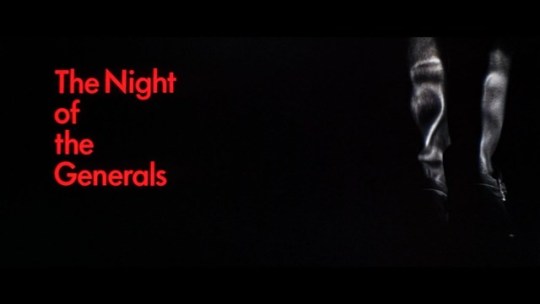
CALIFICACIÓN PERSONAL: 7 / 10
Título Original: The Night of the Generals
Año: 1966
Duración: 148 min.
País: Reino Unido
Director: Anatole Litvak
Guion: Joseph Kessel, Paul Dehn
Música: Maurice Jarre
Fotografía: Henri Decaë
Reparto: Peter O'Toole, Omar Sharif, Tom Courtenay, Donald Pleasence, Joanna Pettet, Philippe Noiret, Christopher Plummer, Harry Andrews, Charles Gray, Nicole Courcel, Howard Vernon, Pierre Mondy, Juliette Greco, Gordon Jackson
Productora: Coproducción Reino Unido-Francia; Horizon Pictures / Filmsonor. Distribuida por Columbia Pictures. Productor: Sam Spiegel
Género: Crime, Drama, Mystery
https://www.imdb.com/title/tt0062038/
TRAILER: https://www.youtube.com/watch?v=h-8rJJ4uYlA
0 notes